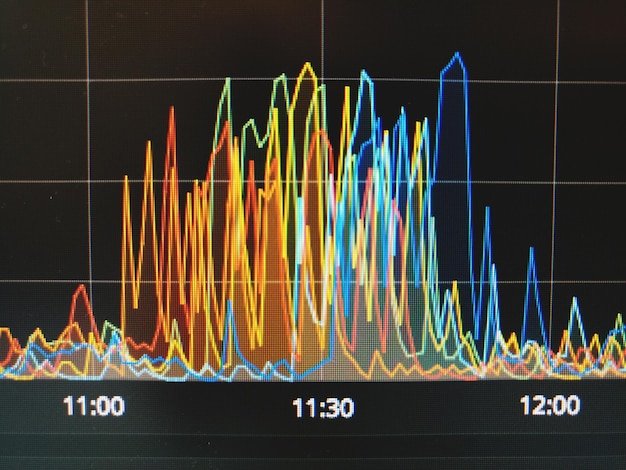Buying Guides: How Inflation Impacts Your 2025 Purchasing Power

Buying Guides: Understanding the Impact of Inflation on Your Purchasing Power – Updated for 2025 provides crucial insights into how rising prices affect consumer spending, offering strategies to navigate financial challenges and make informed purchasing decisions in an inflationary environment.
Navigating the world of personal finance can feel like a constant balancing act, especially when economic factors like inflation come into play. Our Buying Guides: Understanding the Impact of Inflation on Your Purchasing Power – Updated for 2025 dives deep into this topic to explain how rising prices impact the average consumer, providing actionable advice to protect your wallet.
Understanding Inflation’s Grip on the US Economy
Inflation has become a significant concern for American consumers, impacting everything from grocery bills to housing costs. Understanding its causes and effects is the first step towards mitigating its impact on your purchasing power.
What is Inflation and How is it Measured?
Inflation refers to the rate at which the general level of prices for goods and services is rising, and, consequently, the purchasing power of currency is falling. It’s typically measured using indexes like the Consumer Price Index (CPI) and the Personal Consumption Expenditures (PCE) Price Index.
The CPI, released by the Bureau of Labor Statistics, tracks the average change over time in the prices paid by urban consumers for a basket of consumer goods and services. The PCE Price Index, on the other hand, is a measure of the prices that people living in the United States pay for goods and services.

- CPI (Consumer Price Index): Measures the average change in prices paid by urban consumers for a basket of goods and services.
- PCE (Personal Consumption Expenditures) Price Index: Tracks the prices of goods and services purchased由美国个人。
- Inflation Rate: The percentage increase in the price level over a specific period, usually a year.
Understanding these measurements helps gauge the severity of inflation and its potential impact on your financial situation. The CPI and PCE are closely watched by economists and policymakers to make informed decisions about monetary policy.
In conclusion, understanding inflation involves recognizing its basic definition, how it’s measured through indexes like CPI and PCE, and the implications of the inflation rate. This knowledge empowers consumers to make informed financial decisions in an ever-changing economic landscape.
Key Factors Driving Inflation in 2025
Several factors can contribute to rising inflation rates. In 2025, some key drivers include supply chain disruptions, increased consumer demand, and government policies that affect the money supply.
Supply Chain Issues and Their Impact
Global supply chains faced significant challenges in recent years, leading to shortages and higher prices. From raw materials to finished products, delays and bottlenecks have increased the cost of production and distribution. These increased costs are often passed on to consumers in the form of higher prices.
Increased Consumer Demand
As the economy recovers, increased consumer demand can also drive inflation. When more people have more money to spend, demand for goods and services rises. If supply cannot keep pace with this increased demand, prices will inevitably increase.

- Rising Demand: Higher consumer spending can outpace production capacity, leading to price increases.
- Supply Disruptions: Bottlenecks in the supply chain can limit the availability of goods, driving prices up.
- Government Policies: Fiscal and monetary policies can influence the money supply and inflation rates.
Understanding these factors is vital for anticipating future inflationary pressures. By staying informed about the economic drivers behind inflation, consumers can better prepare for potential price increases and adjust their buying strategies accordingly.
In short, inflation in 2025 is driven by a combination of supply chain issues, increased consumer demand, and evolving government policies. Recognizing these factors helps consumers stay ahead and make informed financial decisions.
How Inflation Erodes Your Purchasing Power
Inflation directly affects your purchasing power, meaning the amount of goods and services you can buy with a given amount of money. Understanding this erosion is crucial for budgeting and long-term financial planning.
The Real Value of Your Money
As prices rise, the real value of your money decreases. This means that the same amount of money buys fewer goods and services than it did before. For example, if the inflation rate is 5%, an item that cost $100 last year will cost $105 this year. This reduces the amount you can purchase with your current income.
Impact on Savings and Investments
Inflation can also impact your savings and investments, especially if the returns don’t keep pace with the inflation rate. If your savings account earns 2% interest, but inflation is at 5%, then your real return is -3%. This means that your savings are actually losing purchasing power over time.
To combat this, it’s important to consider investments that offer higher returns potential, such as stocks or real estate. However, these investments also come with higher risks, so it’s essential to diversify your portfolio and seek professional advice.
Ultimately, understanding how inflation erodes your purchasing power enables you to make informed financial decisions and protect your long-term financial security. By recognizing the impact on your savings and investments, you can take steps to mitigate the effects and preserve your wealth.
Strategies to Combat Inflation’s Impact on Your Wallet
While you can’t control inflation, you can take steps to mitigate its impact on your personal finances. Practical strategies include budgeting wisely, seeking discounts and deals, and considering alternative buying options.
Budgeting and Tracking Expenses
Creating and sticking to a budget is one of the most effective ways to manage your money and mitigate the effects of inflation. Track your income and expenses to identify areas where you can cut back. Prioritize essential spending and look for ways to reduce discretionary expenses.
Seeking Discounts and Deals
Take advantage of discounts, coupons, and special promotions to save money on your purchases. Look for sales at your local stores and online retailers. Consider using cashback apps and credit cards to earn rewards on your spending. Planning your shopping around these deals can significantly reduce your overall expenses.
Combating inflation requires a combination of smart budgeting, diligent deal-seeking, and open-minded consideration of alternative buying options. By implementing these strategies, you can protect your financial well-being and maintain a stable economic footing in an inflationary environment.
Adjusting Your Buying Habits in 2025
Inflation may require you to adjust your buying habits to make your money go further. This could mean opting for generic brands, buying in bulk, or delaying non-essential purchases.
Opting for Generic Brands
Consider choosing generic or store brands over name-brand products. Generic brands often offer similar quality at a lower price. By switching to generic brands, you can save a significant amount of money on groceries, household items, and personal care products.
Buying in Bulk
Buying in bulk can be a cost-effective strategy, especially for non-perishable items that you use frequently. Compare the unit prices to ensure you’re getting a good deal. Buying in bulk can significantly lower the cost per item, helping you save in the long run.
- Evaluate Needs: Distinguish between essential and non-essential purchases to prioritize spending.
- Compare Prices: Shop around and compare prices at different stores to find the best deals.
- Delay Purchases: Postpone non-essential purchases until prices drop or sales occur.
By being flexible and adaptable in your spending habits, you can navigate the challenges posed by inflation and maintain a healthy financial lifestyle.
In conclusion, adjusting your buying habits involves opting for generic brands, buying in bulk when practical, and making informed decisions about essential versus non-essential purchases. These strategies collectively empower you to manage your expenses effectively in an inflationary climate.
Long-Term Financial Planning in an Inflationary Environment
Long-term financial planning becomes even more critical during periods of high inflation. Adjusting your investment strategy, considering inflation-protected securities, and diversifying your portfolio are essential steps.
Adjusting Your Investment Strategy
Review your investment portfolio to ensure it aligns with your financial goals and risk tolerance. Consider increasing your exposure to asset classes that tend to perform well during inflationary periods, such as real estate, commodities, and inflation-protected securities.
Inflation-Protected Securities
Invest in inflation-protected securities, such as Treasury Inflation-Protected Securities (TIPS). These securities are designed to protect investors from inflation by adjusting their principal value based on changes in the CPI. TIPS can provide a hedge against inflation and help preserve your purchasing power over time.
Ultimately, long-term financial planning in an inflationary environment requires a strategic approach to investments, a focus on diversification, and a thorough understanding of inflation-protected securities. By taking these steps, you can navigate economic uncertainties and secure your financial future.
| Key Point | Brief Description |
|---|---|
| 💰 Budgeting | Track expenses and cut back to manage money effectively. |
| 🛍️ Discounts | Use coupons and cashback apps to save on purchases. |
| 🛒 Generic Brands | Opt for store brands to save money on groceries. |
| 📈 Investments | Adjust investments and consider TIPS to protect wealth. |
What is Inflation?
▼
Inflation is the rate at which the general level of prices for goods and services is rising, causing a decline in purchasing power.
How does inflation affect my purchasing power?
▼
As prices rise due to inflation, the same amount of money buys fewer goods and services, reducing your purchasing power.
What are some ways to combat inflation’s impact on my wallet?
▼
You can combat inflation by budgeting wisely, seeking discounts, using generic brands, and adjusting your investment strategy to protect your wealth.
What are inflation-protected securities?
▼
Inflation-protected securities, like TIPS, adjust their principal value based on changes in the CPI, safeguarding investors from inflation.
How can I adjust my investment strategy during inflation?
▼
Consider increasing your exposure to assets that perform well during inflation, like real estate and commodities, and diversify your portfolio to reduce risk.
Conclusion
In conclusion, understanding and adapting to the impact of inflation on your purchasing power is essential for financial stability. By employing strategies such as budgeting, seeking discounts, adjusting buying habits, and making informed investment decisions, you can mitigate the effects of inflation and secure your financial well-being in 2025 and beyond.
Read more content





